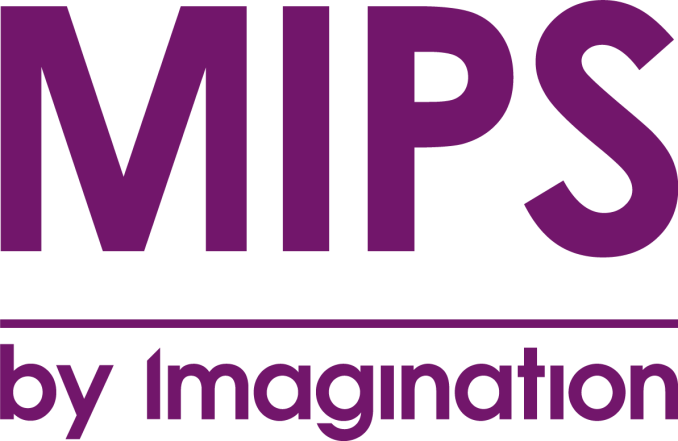MIPS Strikes Back: 64-bit Warrior I6400 Arrives
by Stephen Barrett on September 2, 2014 10:00 AM EST
Introduction
One of ARM’s most tangible business advantages is its offer of both CPUs and GPUs to SoC designers. Anyone with experience in business to business relationships knows just how complex forming and maintaining a mutually beneficial collaboration can be. Setting up contracts, forming rapport, defining goals, and even just understanding documentation and technical content formatting all takes time. Unless there is significant benefit to investing in two different relationships and technologies, it is simpler (read: cheaper) to single source contributing components of a design. There are down sides of single sourcing (see Boeing 787 battery fiasco), but depending on a business’ capacity for risk, the savings are undeniable. Especially when ARM undoubtedly offers bundle pricing promotions.
When Imagination Technologies acquired MIPS Technologies in 2012 for $100 million, their goal was very clear – attack ARM. Imagination’s GPU business was already wildly successful, with design wins in a bevy of high end mobile devices including those from Samsung and Apple. Adding the CPU cores from MIPS, with their decades of history designing and licensing IP, strategically positioned Imagination opposite ARM’s licensing business. Imagination’s executives have also stated they are prepared to offer aggressive IP bundling discounts.
Looking at Imagination’s product, press, demos, and interviews, it appears they are not (yet?) positioning MIPS cores to combat ARM cores at the high end of the market. Rather, they appear focused on being a viable alternative to ARM in multi-threaded and low power workloads. In fact, the vast majority of MIPS cores are currently used in network infrastructure where threading and power efficiency are paramount.
Today MIPS is announcing a major launch: the Warrior I6400 core. Based on the 64-bit MIPS64 instruction set (release 6), the Warrior I6400 core is the middle-class CPU core in a family of three, each targeting a different point in the power/performance curve. Imagination is releasing the I6400 core last, which is at the middle of the pack balancing performance with power. Imagination has already released their high-end P56xx series and low-end M51xx series.
The most analogous ARM core to the I6400 appears to be the ARM Cortex-A53, but I6400 has some interesting features we haven’t seen in this market before and MIPS estimates it will deliver higher performance. I’ve produced a table here to help put performance in context. Note that only A57, A53, P5600, and I6400 are 64-bit processors.
| MIPS and ARM High End IP Cores in Order of Performance | ||
| MIPS |
Manufacturer Estimated DMIPS/MHz/core |
ARM |
| 5.0 | Cortex-A57 | |
| 4.0 |
Cortex-A17 Cortex-A15 |
|
| P5600 | 3.5 | |
| I6400 | 3.0 | |
| 2.5 | Cortex-A9 | |
| 2.3 | Cortex-A53 | |
| 1.9 | Cortex-A7 | |
Keep in mind that these processors use different instruction sets (ISAs) so DMIPS are not directly comparable. However, as they are both RISC processors, the DMIPS should hopefully be roughly comparable. I would like to use directly comparable CoreMark scores but only MIPS provides CoreMark numbers for their processors.
While no one can accurately predict if Imagination will grab additional market share away from ARM, we can educate ourselves on this alternative before it potentially arrives in our hands and homes. And besides, competition is always a good thing.











84 Comments
View All Comments
alexvoica - Tuesday, September 2, 2014 - link
This is typical of any CPU IP - there is a design-in cycle so yes, it will still take some time before it will appear in end devices. But it will blow everyone out of the water when it does - this is why we already see a lot of interest and have secured multiple licensees for I6400.xdrol - Tuesday, September 2, 2014 - link
Directly comparing the IPC of two different ISAs makes no sense; one needs to factor the instruction ratio of the same program compiled to ARM and MIPS too.Stephen Barrett - Tuesday, September 2, 2014 - link
Good point. I've added some text discussing that. Thank you!WonderfulVoid - Tuesday, September 2, 2014 - link
MIPS(64) and 64-bit ARM ISA are quite similar. ARM keeps the condition codes which MIPS does not have. Conditional instructions (except branches) are almost gone. Use of the barrel shifter on one of the operands have been limited.One of the ARMv8 architects is a former MIPS architect...
BoyBawang - Tuesday, September 2, 2014 - link
Sooner ARM will simply evolve to have all the new features of MIPS like SMT. It's dead on arrival. Even in low to mid end I can't see how it could challenge MediaTek unless they price it super aggressively.Stephen Barrett - Tuesday, September 2, 2014 - link
Some companies would be interested in having an alternative to single sourcing ARM processors, even if MIPS processors are the same performance. Its all about managing risk.alexvoica - Tuesday, September 2, 2014 - link
SMT is nothing you build over night. It takes years of testing and proper microarchitectural re-design so let's agree to disagree.varulv - Tuesday, September 2, 2014 - link
Mediatek is a Soc designer, they could buy mips licenses if they can save some money per ciòKrysto - Tuesday, September 2, 2014 - link
> Until MIPS achieves enough volume to convince application developers to code to the MIPS3264 ISA or stick with Java, MIPS Android devices will be second class citizens.Patently false. The next version of Android will make that point moot.
Brett Howse - Tuesday, September 2, 2014 - link
ART is the replacement for Dalvik, not native code.http://www.anandtech.com/show/8231/a-closer-look-a...